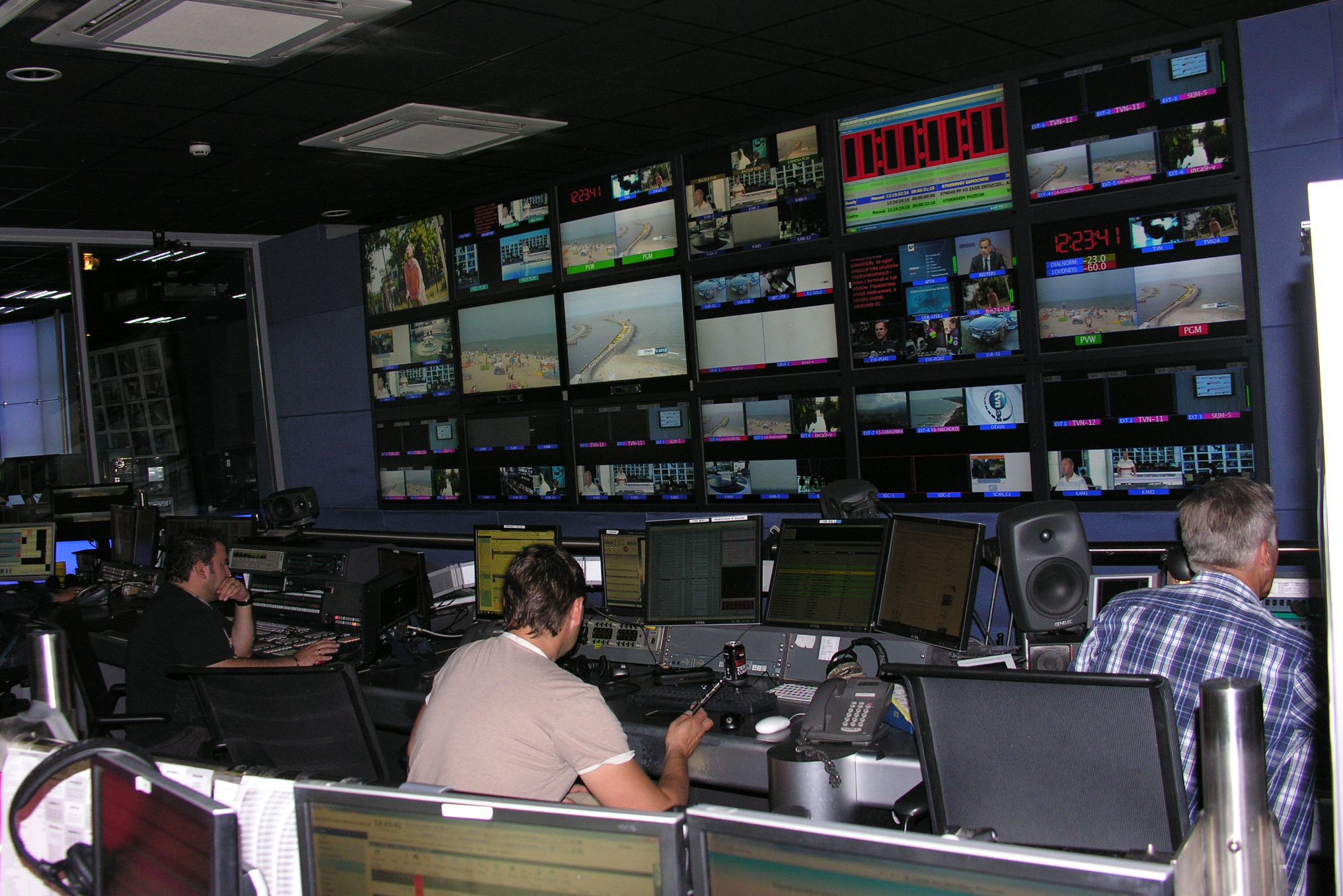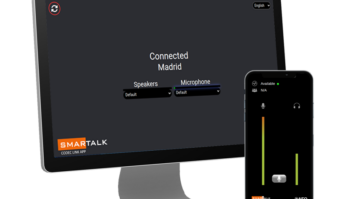
In the UK, Sky News lists a number of significant developments over the recent past on the news front. “Facebook Live has opened up a whole new avenue of newsgathering, forcing organisations to utilise mobile devices to create content,” states Richard Pattison, deputy head, news technology, Sky News. “We have also seen the advent of small, portable and affordable bonded cellular encoders, such as the LiveU LU200, which have allowed us to extend the breadth of coverage by giving more and more crews live capability, whether on foreign deployments or just away from more established newsgathering capability.”
Pattison believes there are also some interesting developments that are just around the corner – bonded cellular encoders featuring HEVC encoding and live 360/VR video, for example. “But the thing that underpins all of the above are LTE mobile networks. It is rare that we will deploy to a story these days and find ourselves without some kind of 4G connectivity.”
Facebook focus
As far as Sky News is concerned, Facebook Live is very much a work in progress, and the technology team is working on ways to capitalise on the opportunities it may present. “At a very basic level, it has provided news organisations with an additional revenue stream, which is always welcome. From a technology point of view, it has forced our newsgathering operations to focus on mobile and IP-based delivery methods which, although they have been around for some time, are sometimes overlooked in favour of more ‘traditional’ delivery methods,” declares Pattison. He feels that as a result Sky News is focusing talent and effort on more flexible, mobile and online-focused contributions that are keeping it at the forefront of newsgathering, and ensuring the broadcaster is well placed to be a truly multi-platform news operation, rather than just a TV station with a website.
Pattison continues, “In terms of Facebook Live, the coup attempt in Turkey was very interesting. Being able to deploy crews with, at least, a LiveU LU200 bonded cellular encoder, meant that all our crews had the capability to deliver live pictures to the studio. Courtesy of Facebook Live, we suddenly had instant access to hundreds, if not thousands, of live video sources, right at the heart of the story, which was pretty incredible.”
Beyond that, with mobile phone footage increasingly being used for the immediacy of a situation, are there any technology developments in that area that Sky News would like to see? “In the last six months or so we have seen improvement in live bonding apps by the likes of Dejero and LiveU, such that with the right set up, the quality of image delivered can be indistinguishable to a viewer from that of a truck or cellular bonding unit. Specifically, Dejero taking advantage of the iPhone 6 Plus and 6S Plus optical stabilisation was a big step to reducing the shaky, hand-held feel that often gives mobile delivery away.”
Second opinion
Moving into the area of second screens, Chris Smith, technology executive, Sky News, takes up the story. “This is an interesting concept in news. Other events, like sport, have a primary activity – the game or match – for the viewer to focus on and for the second screen environment to support with facts and figures. For news, the provision of what might be considered second screen video or data elsewhere, is often the primary output of the news channel.”
Smith says that Sky News provided second screen activity during the 2015 General Election when it streamed live coverage from 150 constituency counts to YouTube. These streams were made available via the election section of the Sky News website and apps, but the viewing figures were not enormous. “I think at the moment, rather than concentrating on supporting our TV audience with second screen facilities, we have focused on delivering appropriate, engaging content for our various different audiences on platforms like Facebook, our website, apps and TV channel,” emphasises Smith.
Moving on
So, what does the technology team see as the next major technological advance?
“I think the next significant step will be the implementation of IP workflows into the heart of traditional SNG trucks,” says Smith. “The use of platforms like Newtec’s Dialog offering, whether directly in-house, or via a third party service like Network Innovations Mavericks, means that trucks can become connected vehicles offering a range of IP services. In addition, they can deliver quality video while retaining the same SNG-related benefits of reliable and easily-available, independent connectivity, regardless of location.”
Pattison adds some information concerning a project with Sky Deutschland. “It’s early days, but we are working on a proof of concept with our colleagues that will see an all-IP SNG workflow. We’re also working on live 360 and VR video, but at this stage, until the wider public are consuming this kind of content regularly, and readily have the means to do so – that is, having an Oculus Rift headset or similar, I think it’s value to news is limited. But it’s an exciting time for newsgathering, there are a number of interesting developments that are arriving or just over the horizon, all of which point to an IP-based workflow.”
The Russian platform
In the opinion of Anna Belkina, director of marketing and strategic development and head of communications at RT, the 360-degree video/virtual reality (VR) format is a game-changer for the news industry. “From the newsgathering perspective, it’s the most unfiltered news it can be, especially when streamed live. From the news consumption perspective, it is the most immersive, engaging content yet, allowing for the ultimate sense of presence for the viewer.”
She reports that RT has always embraced social media platforms. “RT launched in 2005, as the mobile revolution was kicking off. As such, we are constantly perfecting our mobile applications, that give viewers access to RT’s news content in English, Arabic, Spanish, Russian, French and German. Today, we have become the absolute leader on YouTube among TV news channels – with nearly four billion views – within just a few years of the platform becoming available in Russia.”
Belkina adds that another platform that’s making an impact is Periscope, the live-streaming service that also allows for social interactions in real time. “RT has been leveraging this platform for special coverage of high profile international events, including summits, conferences and interviews with leading public figures, such as Maria Zakharova, the spokesperson for Russia’s Foreign Ministry.”
Periscope enabled RT correspondents to bring live-stream footage from ISIS-affected conflict areas direct to the viewers’ mobile devices, and get their response – from all corners of the world. Belkina believes the 360 format has been instrumental in giving a multidimensional picture of such major stories. “Sometimes these are special features that benefit from using a cross-section of new technology. We combined drone filming, audio commentary and 360 video for understanding the scope of devastation of the Donetsk area in eastern Ukraine, or sourcing videos from 360 cameras mounted on tanks and fighter jets for the unprecedented Victory Day coverage from Moscow’s Red Square. These all give our viewers a sense of presence at these places.”
In 2015, RT became the first news channel to launch a dedicated 360 mobile app, RT360. Earlier this year, RT was the first TV news channel to carry a 360-degree video broadcast live and in HD, on YouTube.
Combining technology
As already mentioned, RT has been successfully using drone technology, and in some areas it is has proved indispensable. “All the way back in early 2014 we showed protests in Kiev’s Maidan Square, and most recently filmed the construction of the Crimea Bridge, where we actually combined drone filming with the 360 technology for a multi-dimensional look at the construction progress and process.”
She continues, “Using drone cameras, we were able to bring our viewers a unique view of the ancient city of Palmyra, recently liberated from the IS militants. You just don’t get this perspective from the ground filming.”
So, how does Belkina see the future? “The 360 video technology has a potential to revolutionise the news industry, but it still has ways to go before mass adoption. There are still a lots of challenges to producing high-quality VR content, such as moving beyond the limitations of a static camera mount while maintaining a seamless user experience. But as tech innovation addresses these issues and the audience becomes more educated about everything that VR content can offer, we will likely see this format moving from being a purview of just the specialists, to something with an appeal for all. I believe what we will see is the border between mediums and platforms – both for newsgathering and news delivery – become further eroded at neck-breaking pace.”
The Polish view
According to Jarosław Kielmel, technical director at Poland’s TVN News, the most significant development in newsgathering procedures over the last two years has been bonded cellular technology with broad deployment of Long-Term Evolution (LTE). “Forty per cent of our ENG sets are equipped with Aviwest cellular transmitters. The use of this technology eliminates the need to use SNG uplinks for live news coverage. In this way, the news is delivered faster and with lower costs.”
He reports that TVN crews use the technology every day – in fact, many times a day. “It is especially helpful inside buildings, on the move, inside large crowds, demonstrations and abroad. It allows us to move freely with the camera during live transmission with just the operator and the reporter.”
Also on the subject of ENG crews, Kielmel reveals that TVN utilises several DJI Phantom and Inspire drone units for its newsgathering operation. “The main problem is that the legal regulations are not finalised. There are a great many informal, intermediate procedures that are changing, and because of that we are unable to formulate any long term plans for their use.”
When it comes to mobile phone footage being increasingly used for the immediacy of news-worth situations, he’d like to see dual modem phones being offered with bonding technology incorporated.
Pros and cons
Kielmel says that he is seeing an increase in the use of IP technology – but, at present, there are reservations. “The problem with monetising the increased IP reach still exists, and there is no clear scenario how to achieve desired financial results.”
On a positive note, he says that second screen experiences are being used more and more across all programme genres – but the opportunity to enhance the news service with greater information is of special interest. “Our web production team prepares stories for a variety of screens, including desktop, mobile and tablets and for services such as Facebook, Twitter, WhatsApp and Instagram,” states Kielmel. “Certainly, I see that increasing over the next year.”
So, what does Kielmel perceive as the next major technological advance that will help newsgathering organisations? “There are two areas where I think developments are necessary. First, camera manufacturers should incorporate cellular bonding technology into their camcorders. Secondly, drone manufactures should produce units with broadcast quality transmission links. Those technological advances will help all news organisations.”







